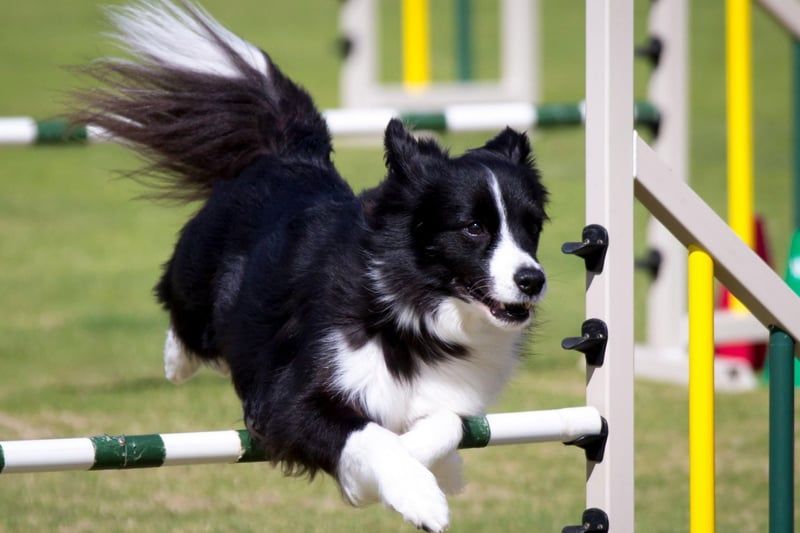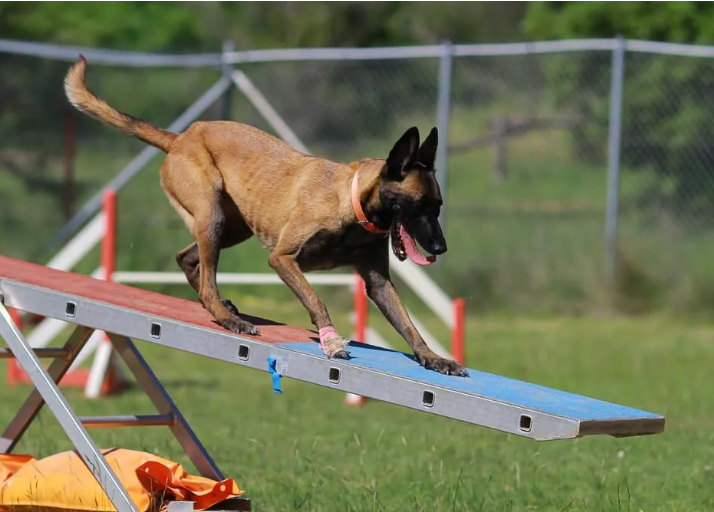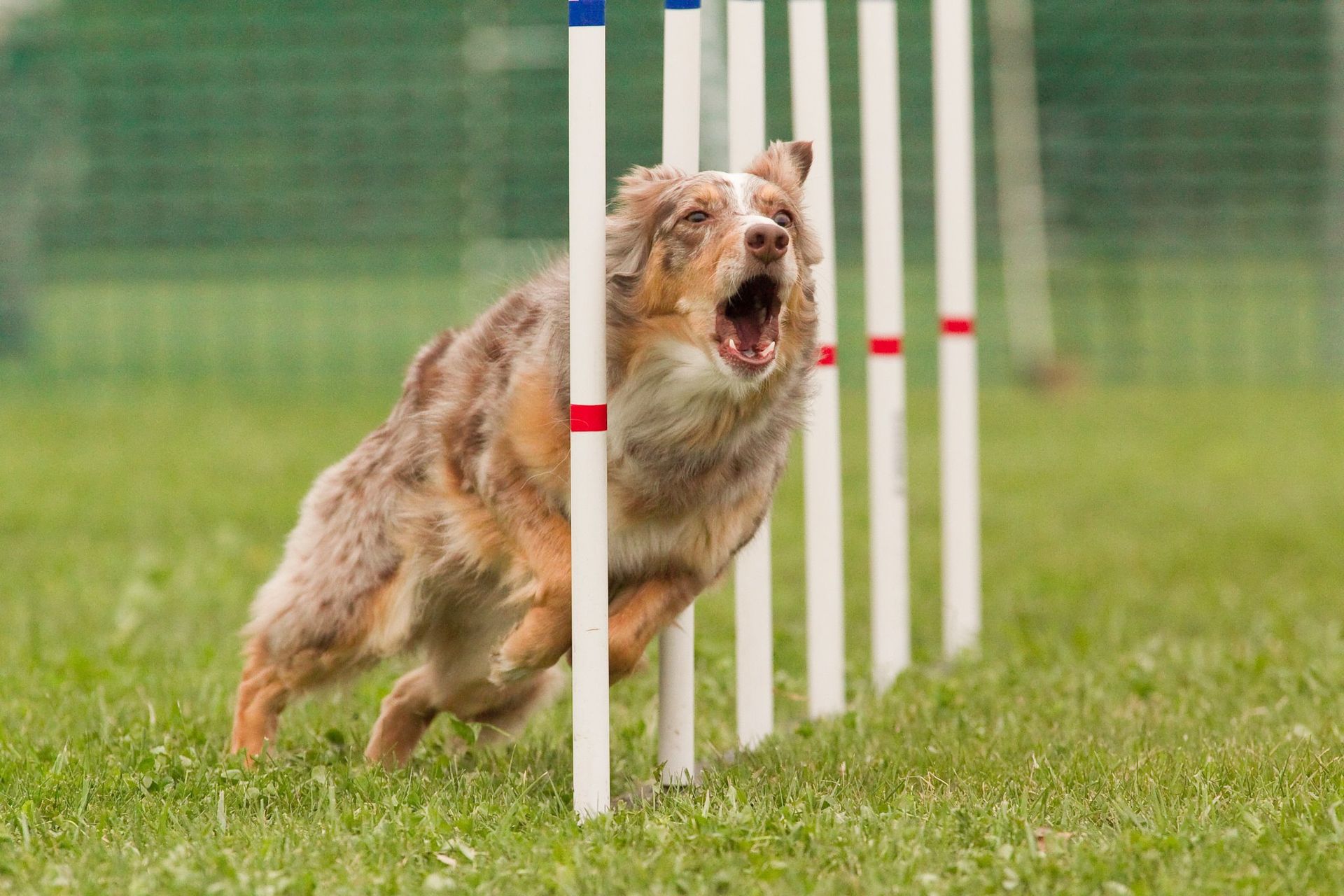Dog Trainer Advice for Agility in Non-Show Dogs
Agility With Show Dogs and Non-Show Dogs
Agility training is not just reserved for purebred dogs with pedigrees; it's a fantastic activity for all dogs, regardless of breed or size. Agility training enhances your dog's physical fitness, mental sharpness, and strengthens the bond between you and your furry companion. In this essay, we'll delve into the fundamentals of agility training for regular dog breeds, offering practical tips and insights to help you unleash your dog's full potential. Agility training is a sport where dogs navigate obstacle courses under the guidance of their handlers. The obstacles include jumps, tunnels, weave poles, A-frames, and more. Training sessions focus on teaching dogs to perform these tasks accurately and swiftly, emphasizing communication and teamwork between dog and handler.
Before diving into agility-specific exercises, ensure your dog has a solid foundation in basic obedience commands like sit, stay, come, and heel. These commands form the building blocks for agility dog training Corpus Christi and are crucial for effective communication during agility courses. Regular exercise is essential for maintaining your dog's physical health and agility. Incorporate daily walks, runs, or play sessions to keep your dog active and in good shape. Additionally, include activities that promote balance, coordination, and strength, such as fetch, tug-of-war, and hiking.
Speak With A Dog
Training Expert
Speak With A Dog Training Expert
Thank you for contacting us!
We will contact you shortly!
Please try again later.
Agility With Show Dogs and Non-Show Dogs
Agility training is not just reserved for purebred dogs with pedigrees; it's a fantastic activity for all dogs, regardless of breed or size. Agility training enhances your dog's physical fitness, mental sharpness, and strengthens the bond between you and your furry companion. In this essay, we'll delve into the fundamentals of agility training for regular dog breeds, offering practical tips and insights to help you unleash your dog's full potential. Agility training is a sport where dogs navigate obstacle courses under the guidance of their handlers. The obstacles include jumps, tunnels, weave poles, A-frames, and more. Training sessions focus on teaching dogs to perform these tasks accurately and swiftly, emphasizing communication and teamwork between dog and handler.
Speak With A Dog
Training Expert
Speak With A Dog Training Expert
Thank you for contacting us!
We will contact you shortly!
Please try again later.
Before diving into agility-specific exercises, ensure your dog has a solid foundation in basic obedience commands like sit, stay, come, and heel. These commands form the building blocks for agility dog training Corpus Christi and are crucial for effective communication during agility courses. Regular exercise is essential for maintaining your dog's physical health and agility. Incorporate daily walks, runs, or play sessions to keep your dog active and in good shape. Additionally, include activities that promote balance, coordination, and strength, such as fetch, tug-of-war, and hiking.



Patience and Communication in Agility Dog Training Corpus Christi
Begin by introducing your dog to agility equipment gradually. Start with low-intensity obstacles like tunnels and low jumps. Use positive reinforcement techniques like treats, praise, and toys to motivate your dog and create a positive association with the equipment. As your dog becomes more comfortable with basic obstacles, gradually increase the difficulty level. Introduce more challenging obstacles like weave poles, higher jumps, and contact equipment such as the A-frame and seesaw. Break down complex tasks into smaller steps, rewarding your dog for each successful attempt.
Effective communication is key to successful agility Corpus Christi dog training. Use clear verbal cues, hand signals, and body language to guide your dog through the course. Practice consistency and patience, allowing your dog time to understand and respond to your commands. Keep training sessions fun and engaging to maintain your dog's motivation. Incorporate a variety of activities, rewards, and challenges to keep your
Patience and Communication in Agility Dog Training Corpus Christi
Begin by introducing your dog to agility equipment gradually. Start with low-intensity obstacles like tunnels and low jumps. Use positive reinforcement techniques like treats, praise, and toys to motivate your dog and create a positive association with the equipment. As your dog becomes more comfortable with basic obstacles, gradually increase the difficulty level. Introduce more challenging obstacles like weave poles, higher jumps, and contact equipment such as the A-frame and seesaw. Break down complex tasks into smaller steps, rewarding your dog for each successful attempt.
Effective communication is key to successful agility Corpus Christi dog training. Use clear verbal cues, hand signals, and body language to guide your dog through the course. Practice consistency and patience, allowing your dog time to understand and respond to your commands. Keep training sessions fun and engaging to maintain your dog's motivation. Incorporate a variety of activities, rewards, and challenges to keep your dog mentally stimulated. Pay attention to your dog's energy levels and mood, adjusting the intensity of training accordingly. Consistency is crucial in agility training. Establish a regular training schedule and stick to it. Short, frequent training sessions are more effective than long, sporadic ones. Repeat exercises regularly to reinforce learning and improve your dog's performance over time. Prioritize your dog's safety during agility training. Ensure that the equipment is sturdy and properly set up to prevent accidents. Monitor your dog for signs of fatigue or discomfort, and never push them beyond their limits. Consult with a veterinarian if you have any concerns about your dog's physical health or fitness for agility training.
Agility training offers numerous benefits for regular dog breeds, including improved physical fitness, mental stimulation, and strengthened bonds with their owners. By following the tips outlined in this essay and approaching training with patience, consistency, and positivity, you can unlock your dog's agility potential and embark on an exciting journey of discovery and growth together.
dog mentally stimulated. Pay attention to your dog's energy levels and mood, adjusting the intensity of training accordingly. Consistency is crucial in agility training. Establish a regular training schedule and stick to it. Short, frequent training sessions are more effective than long, sporadic ones. Repeat exercises regularly to reinforce learning and improve your dog's performance over time. Prioritize your dog's safety during agility training. Ensure that the equipment is sturdy and properly set up to prevent accidents. Monitor your dog for signs of fatigue or discomfort, and never push them beyond their limits. Consult with a veterinarian if you have any concerns about your dog's physical health or fitness for agility training.
Agility training offers numerous benefits for regular dog breeds, including improved physical fitness, mental stimulation, and strengthened bonds with their owners. By following the tips outlined in this essay and approaching training with patience, consistency, and positivity, you can unlock your dog's agility potential and embark on an exciting journey of discovery and growth together.
